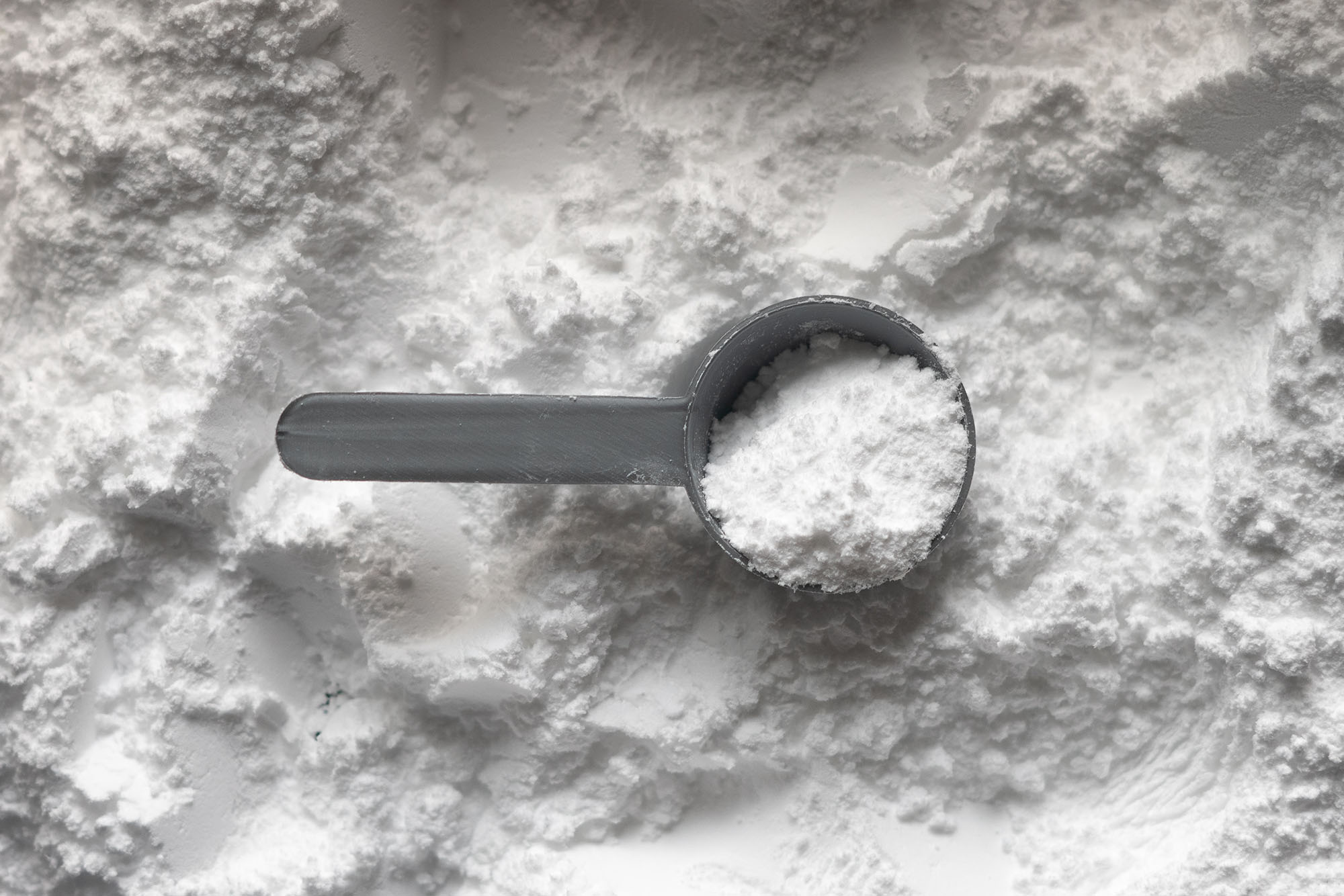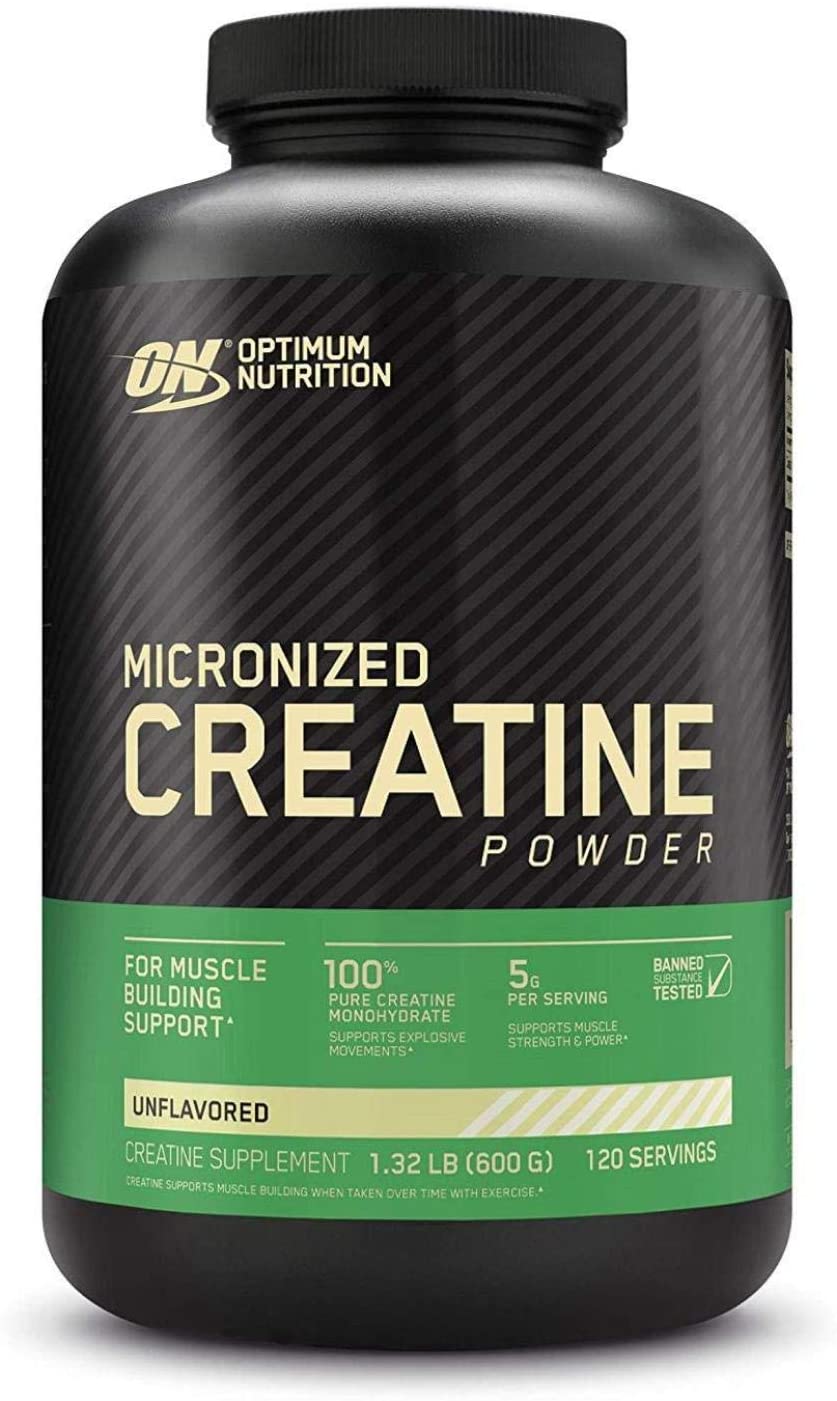Although the word “creatine” is most often associated with strength effort and building muscle mass, its consumption is more and more often noticed among endurance sports. What is creatine and how does it affect our body? How to supplement it to bring benefits and does the use of creatine make sense among cyclists? Should you use creatine in cycling? You can learn all of this in this article.
What is creatine?
Creatine is one of the oldest and most studied supplements, and thus one of the safest. It was first described in 1832 by Michel Eugène Chevreul. Creatine, also known as β-methylguanidine acetic acid, is a chemical compound formed from the amino acids: arginine, methionine, and glycine, so its structure resembles a protein.
Sources and types of creatine
Creatine is produced naturally by the human body in the liver, pancreas, and kidneys, and it is stored mainly in skeletal muscles (95%), 2/3 of which is bound to phosphorus to form a compound called phosphocreatine. It is responsible for the rapid breakdown of ATP (energy source) in the cellular cytoplasm.
The daily demand for creatine is about 2 g (for a human weighing 70 kg), half of which is produced by the body, and the rest should be supplied with food.
Natural creatine is found in food in fish and meat, for example, 0.5 kg of beef or salmon provides about 2.2 g of this compound. These are not large quantities, because assuming that we want to provide 5 g of creatine per day (recommended dose) [1], we would have to eat as much as 1 kg of these products per day.
A much more practical approach is to provide creatine in the form of a supplement – in the form of tablets or powder.
There are many types of creatine on the market. The most studied in terms of effectiveness and safety is creatine monohydrate. Creatine malate is equally popular. There are also other compounds such as: creatine magnesium chelate, creatine nitrate, or creatine orotate, but when it comes to choosing the right supplement, I would choose the unrivaled monohydrate.
How does creatine work? Is it always about gaining muscle mass?
Creatine supplementation results in greater strength, muscle mass and endurance, and improved regeneration.
The use of creatine in supplementation support programs, however, is not always associated with weight gain. Creatine increases muscle mass only when its intake is combined with muscle strength training and sufficiently high consumption of energy and protein.
The use of an isocaloric diet in the case of endurance and speed disciplines (such as cycling) does not have a greater impact on the increase in muscle mass, but only on the improvement of muscle performance.
Typically, a 1-2 kg weight gain is seen after 4-5 days of supplementation. This effect of creatine was shown in 43 scientific publications, but no such effect was found in 24 other studies.
Weight gain from creatine use is possibly related to water retention. Creatine is an osmotically active compound, which means that it has the ability to absorb an increased volume of water into cells. An increase in intracellular water levels may directly translate into weight gain. Some researchers also emphasize that the increase in water volume in cells triggers an additional anabolic stimulus [2].
Creatine also supports the transport of energy to the sites of protein synthesis – it intensifies the synthesis of RNA (ribonucleic acid). It acts as a protein replicating matrix. Creatine effectively enables the performance of harder physical work [3].
When taking care of the diet in the period of post-workout regeneration, it intensifies the process of muscle protein synthesis, in proportion to the intensity of exercise.
How to supplement creatine?
In the human body weighing 70 kg, there is about 120 g of creatine in the muscles. We can increase this value to 160 g by increasing its consumption.
Over the years, many ways of creatine supplementation have been presented. Two of them are the most popular:
– The first involves supplementing with 5 g of creatine daily. In this form, it can be used for a long period. You can deliver it at any time of the day, because it is not about the temporary effect of the increased dose, but the constant saturation of the muscle with this compound. It is most often used in the morning or before training.
– If you would like to speed up the process of creatine saturation, you can provide 20 g of creatine per day for the first week of supplementation. In the following weeks, reduce the amount of consumption to 3-5 g per day. However, remember not to take this amount at once as it can cause gastric problems. Divide 20 g of creatine into 4-5 smaller portions during the day (e.g. 5 g x 4)
Creatine in cycling – advantages
Many of you ask whether the use of creatine in cycling makes any sense? My answer is: it depends. The goal you have chosen and the type of cycling you do is very important.
Its effect on ATP resynthesis is conducive to increasing the content of phosphocreatine in the muscles, so the systematic use of creatine may lead to an increase in physical performance in the case of short-term and intense training, which will be a valuable supplement to the preparation periods. There are also several studies confirming the beneficial effect on track and gravity cycling, i.e, where a short and intense effort is required [4].
If we want to increase strength and muscle mass in the legs, it is worth considering creatine supplementation along with strength training outside the cycling season [5].
Creatine should also be used in the event of an injury when you can’t work out. It is perfect as an anti-catabolic agent and, in combination with an appropriate diet, will help prevent the loss of muscle mass [6].
However, it will not work for long-distance training. Its supplementation will not increase the efficiency of the training unit.
Creatine in cycling – disadvantages
Creatine, as one of the most studied supplements, is safe for health and, when used by healthy people as recommended, does not cause side effects. However, when it comes to its use by cyclists, a definite disadvantage is the weight gain (usually from 0.5 to 1.5 kg) [7] associated mainly with water retention.
There is also a genetic aspect. It has been shown that approximately 30% of people who supplement creatine have not increased the amount of creatine in the muscle tissue. This is due to differences in the structure of the muscle (the percentage of fast-twitch and slow-twitch fibers) [8].
Summary – is creatine good for cyclists?
Creatine is one of the most-researched supplements and definitely safe for your health. It occurs naturally in our body, mainly in muscle tissue. It is used primarily in conjunction with resistance training to increase muscle mass.
Could creatine intake by cyclists benefit? It depends on the goal. It will work mainly in the case of track or gravity cycling, where the effort is short and intense. It is also recommended outside the training season, where, in combination with strength training, it can increase strength in the muscles of the legs.
The decisive downside of creatine in the case of cycling is its effect on body weight. There was also no significant effect on endurance cycling.
Check our Cycling Guide to find a balance between life and training.
Resources:
- Jose Antonio, Darren G. Candow, Scott C. Forbes, Common questions and misconceptions about creatine supplementation: what does the scientific evidence really show? Journal of the International Society of Sports Nutrition volume 18, Article number: 13 (2021)
- Alton F.BurnsDelbert M.GatlinIII Dietary creatine requirement of red drum (Sciaenops ocellatus) and effects of water salinity on responses to creatine supplementation, Department of Wildlife and Fisheries Sciences, Texas A&M University, College Station, TX 77843, USA
- Eileen D.Hickey, Lee A.Weber, Corrado Baglioni, Nuclease activity in preparations of creatine phosphokinase: Effect on mRNA stability, Department of Biological Sciences State University of New York at Albany Albany, New York 12222 USA
- A Casey, D Constantin-Teodosiu, S Howell, E Hultman, P L Greenhaff, Creatine ingestion favorably affects performance and muscle metabolism during maximal exercise in humans, Am J Physiol. 1996 Jul;271(1 Pt 1):E31-7. doi: 10.1152/ajpendo.1996.271.1.E3
- Eric S Rawson, Jeff S Volek Effects of creatine supplementation and resistance training on muscle strength and weightlifting performance, J Strength Cond Res. 2003 Nov;17(4):822-31.
- P Hespel, B Op’t Eijnde, M Van Leemputte, Oral creatine supplementation facilitates the rehabilitation of disuse atrophy and alters the expression of muscle myogenic factors in humans, Physiol. 2001 Oct 15;536(Pt 2):625-33.
- Greg Cox, Iñigo Mujika, Douglas Tumilty, Louise Burke, Acute creatine supplementation and performance during a field test simulating match play in elite female soccer players, Int J Sport Nutr Exerc Metab. 2002 Mar;12(1):33-46.
- R C Harris, K Söderlund, E Hultman, Elevation of creatine in resting and exercised muscle of normal subjects by creatine supplementation, n Sci (Lond).992 Sep;83(3):367-74.








